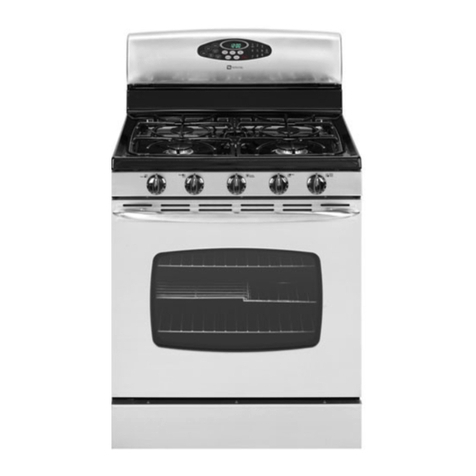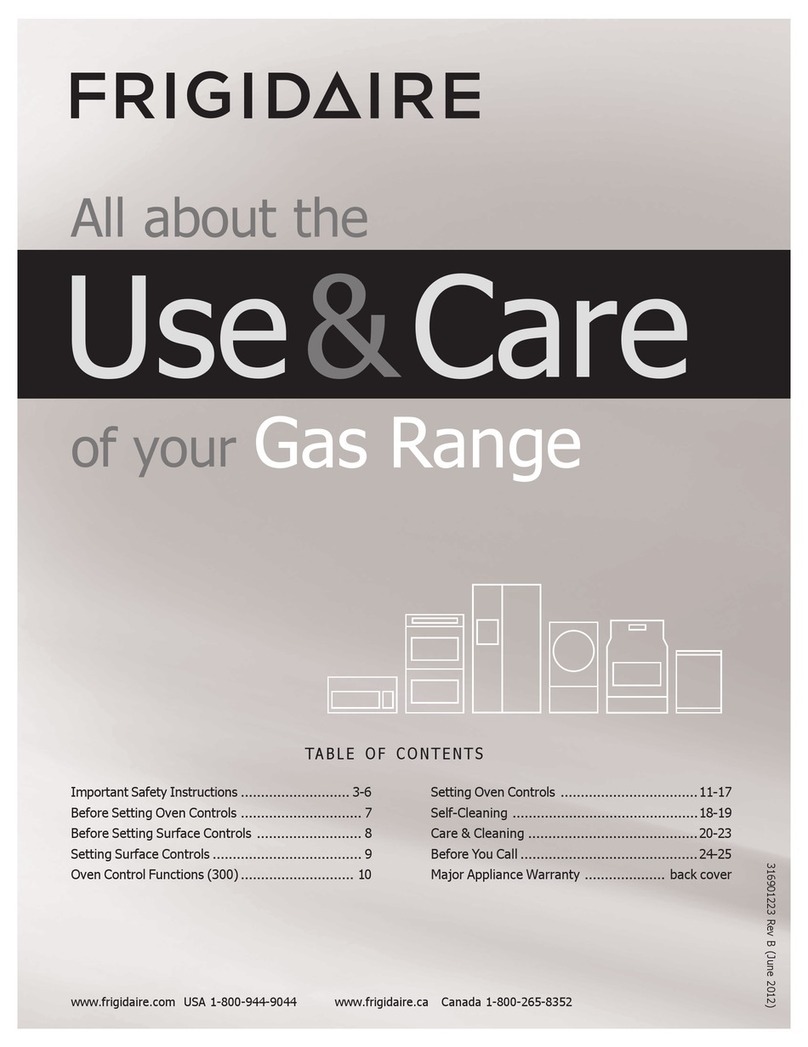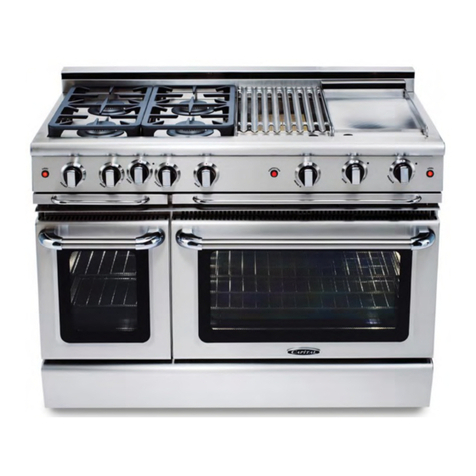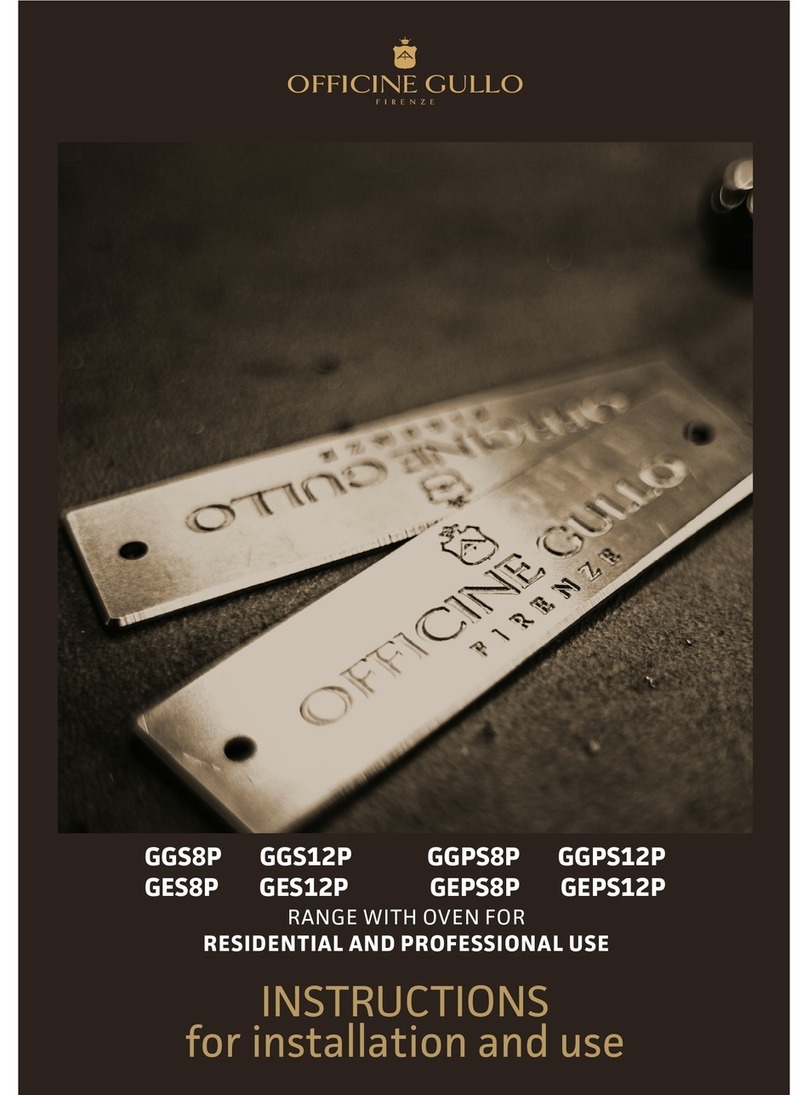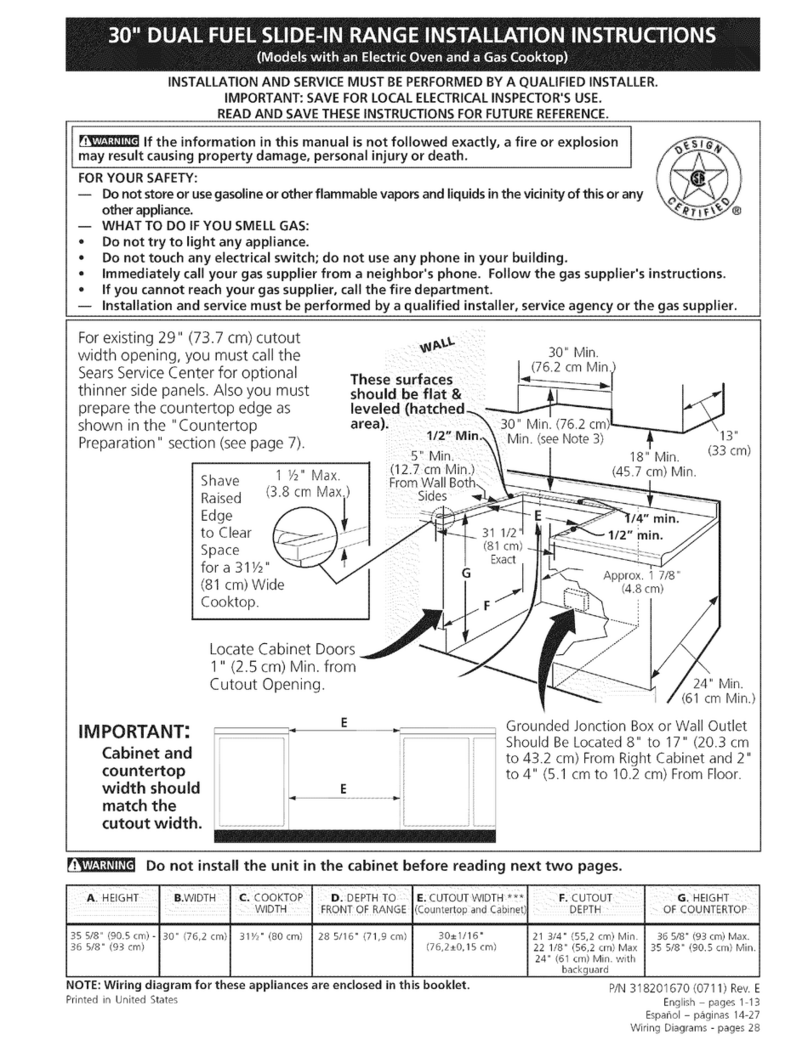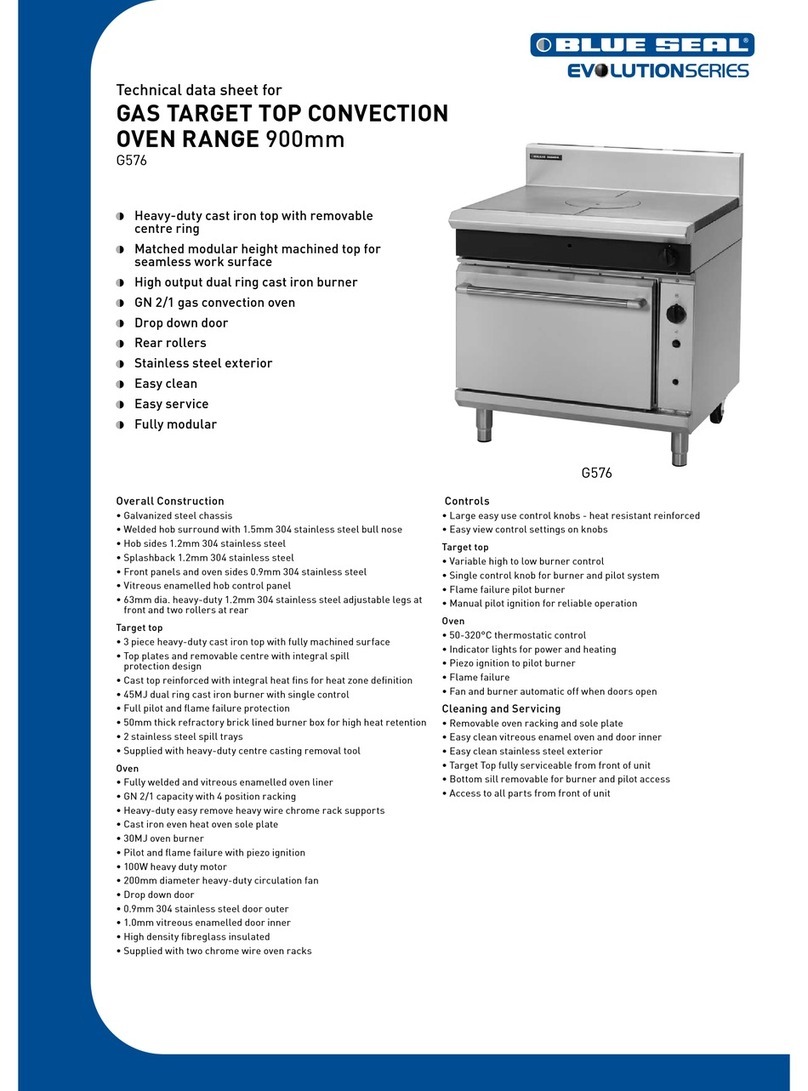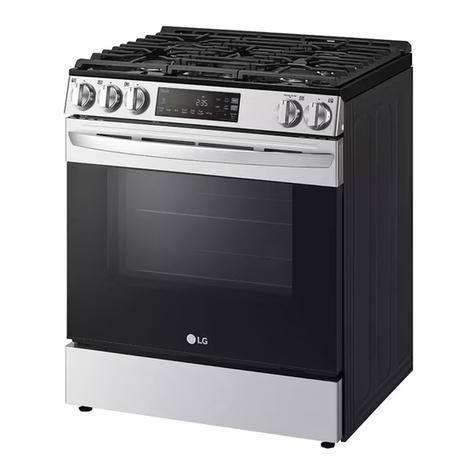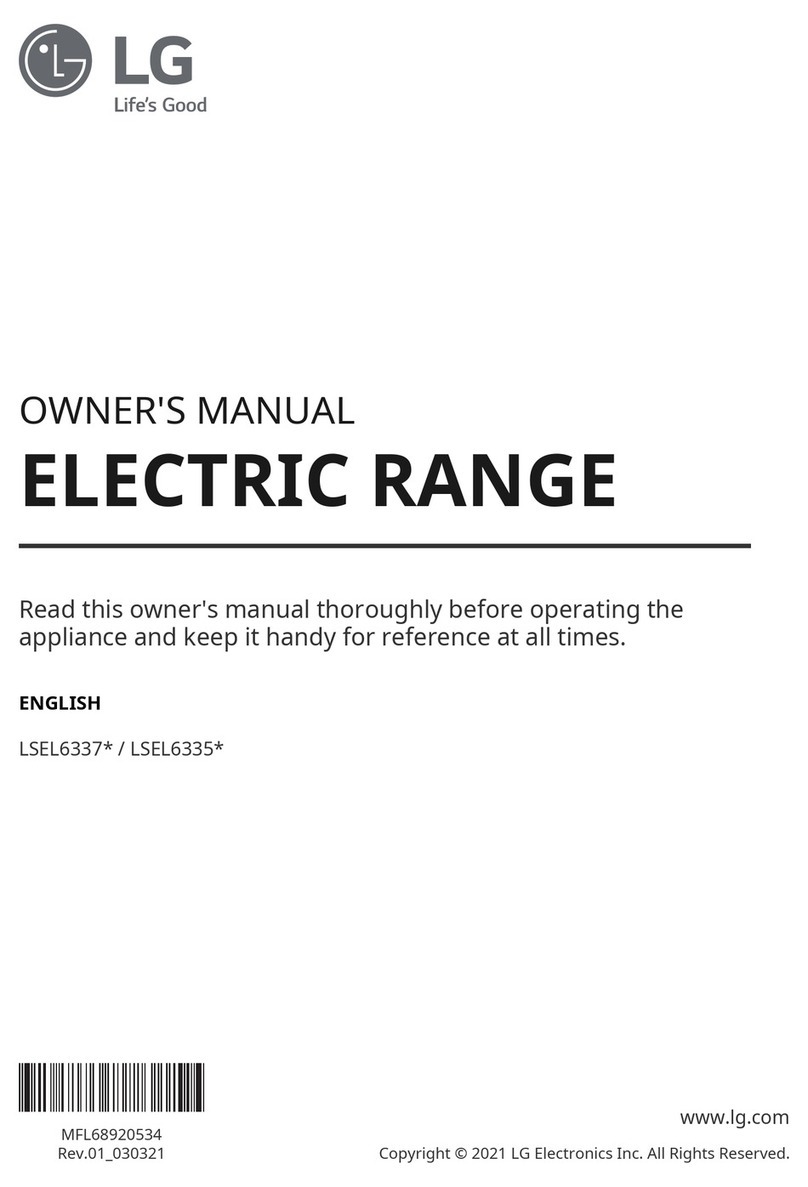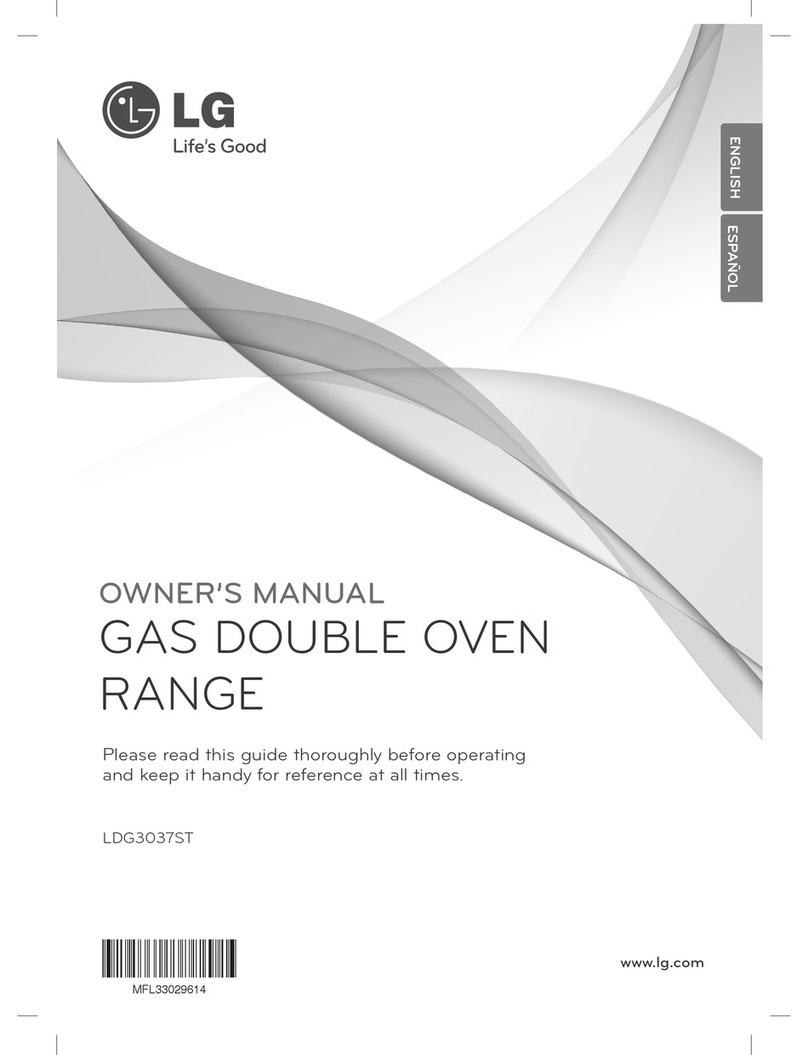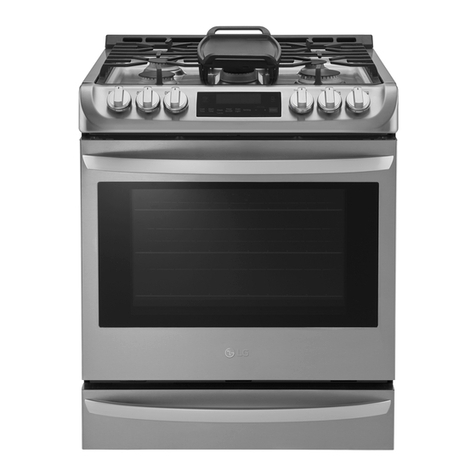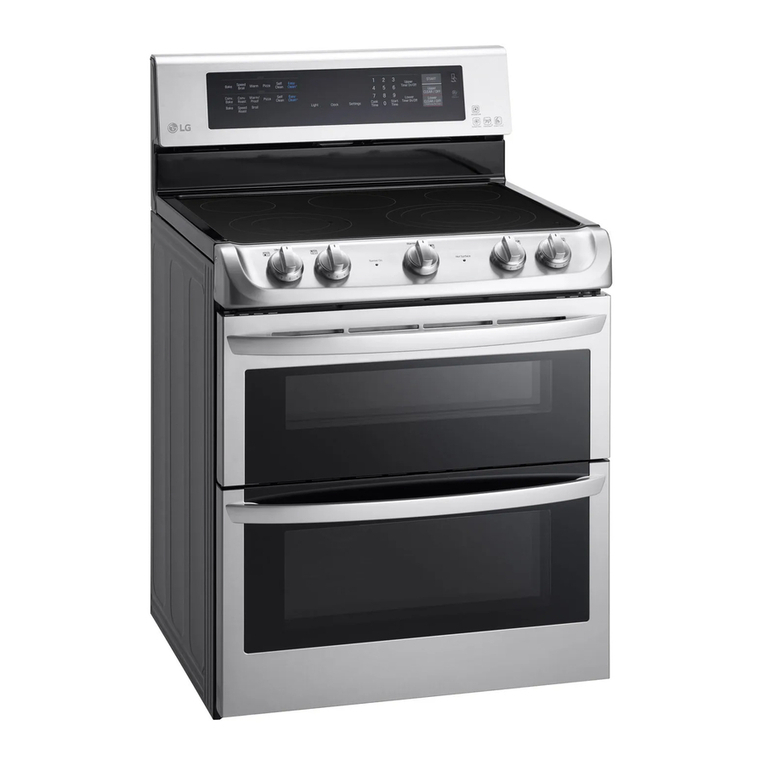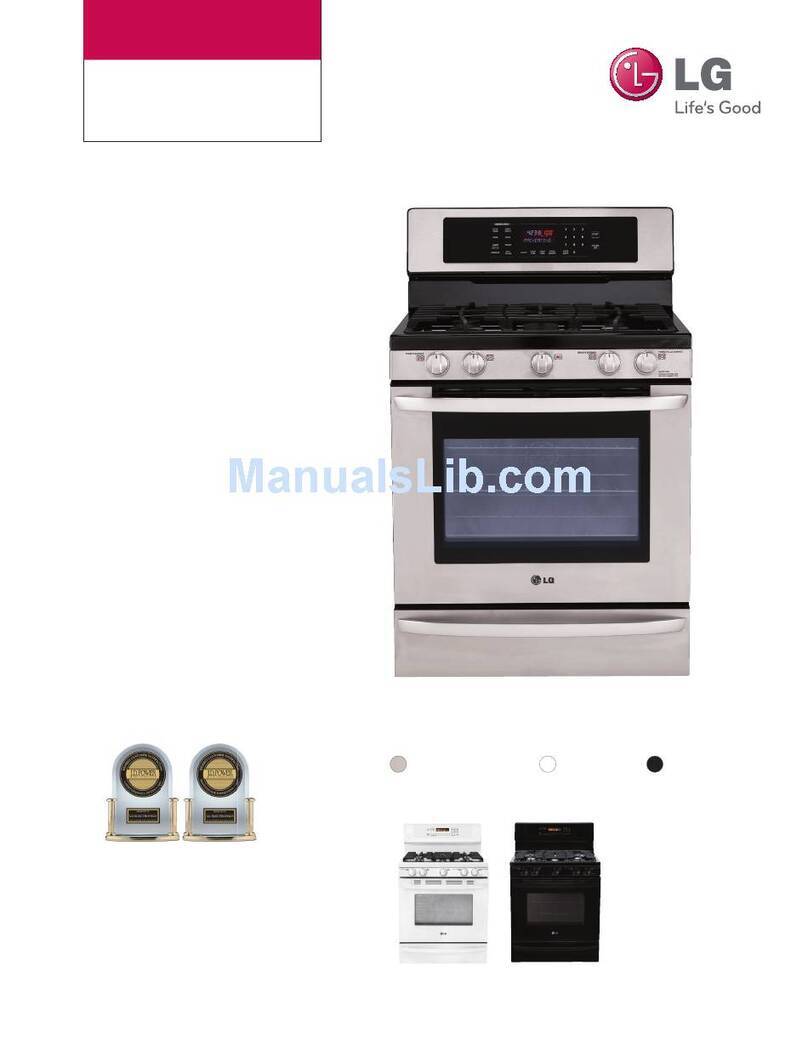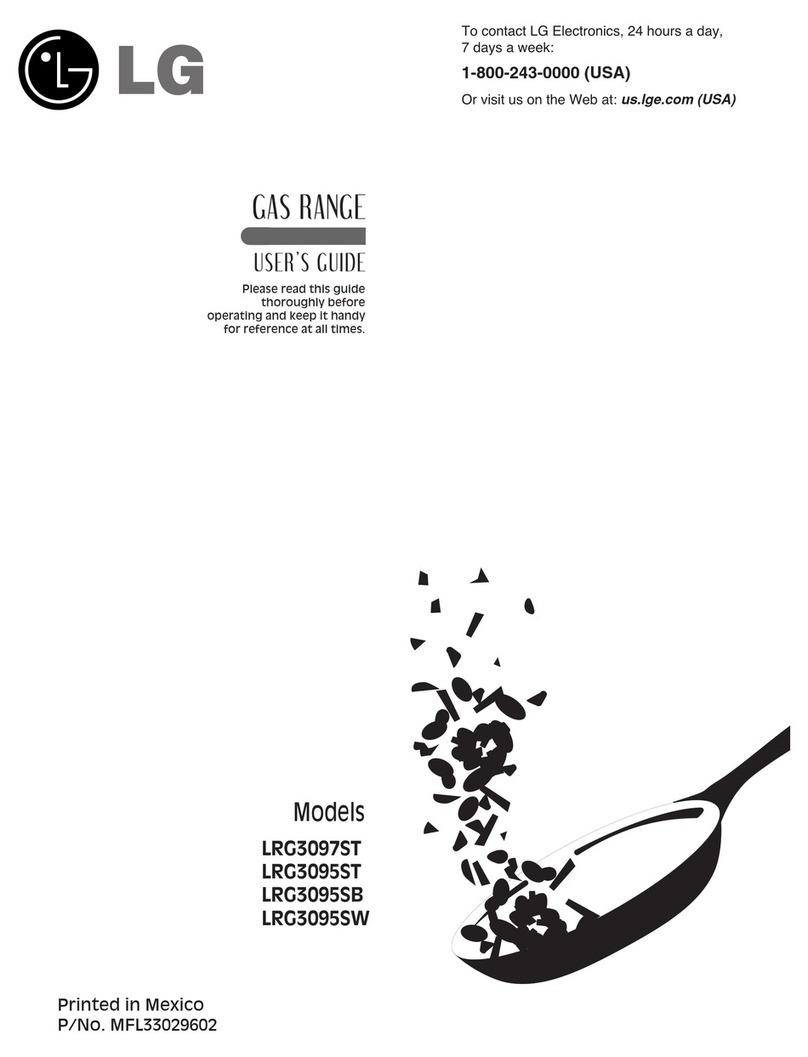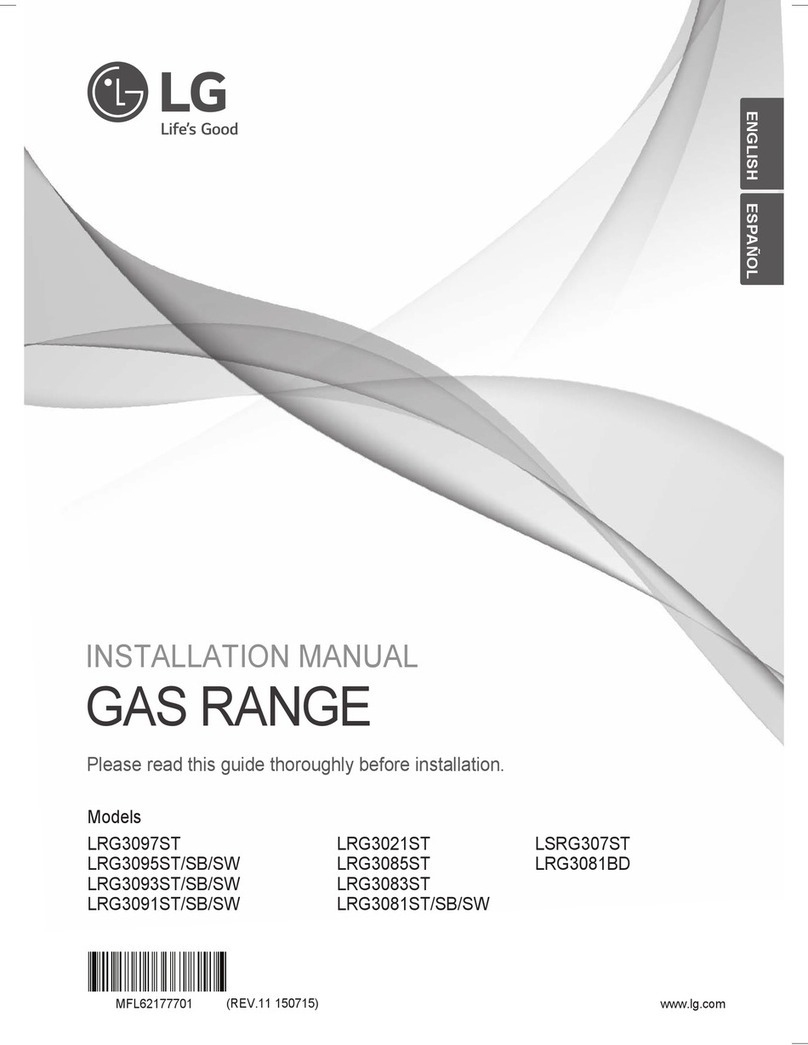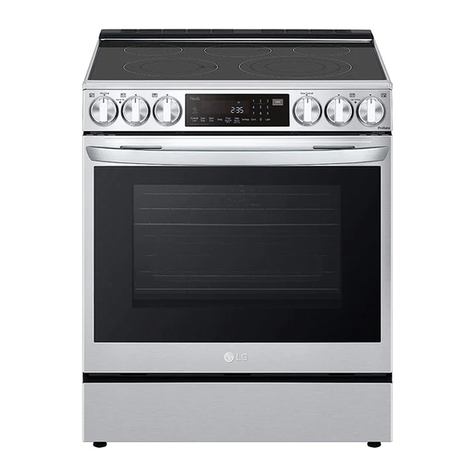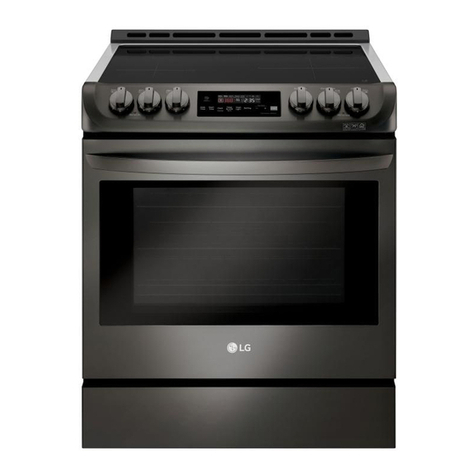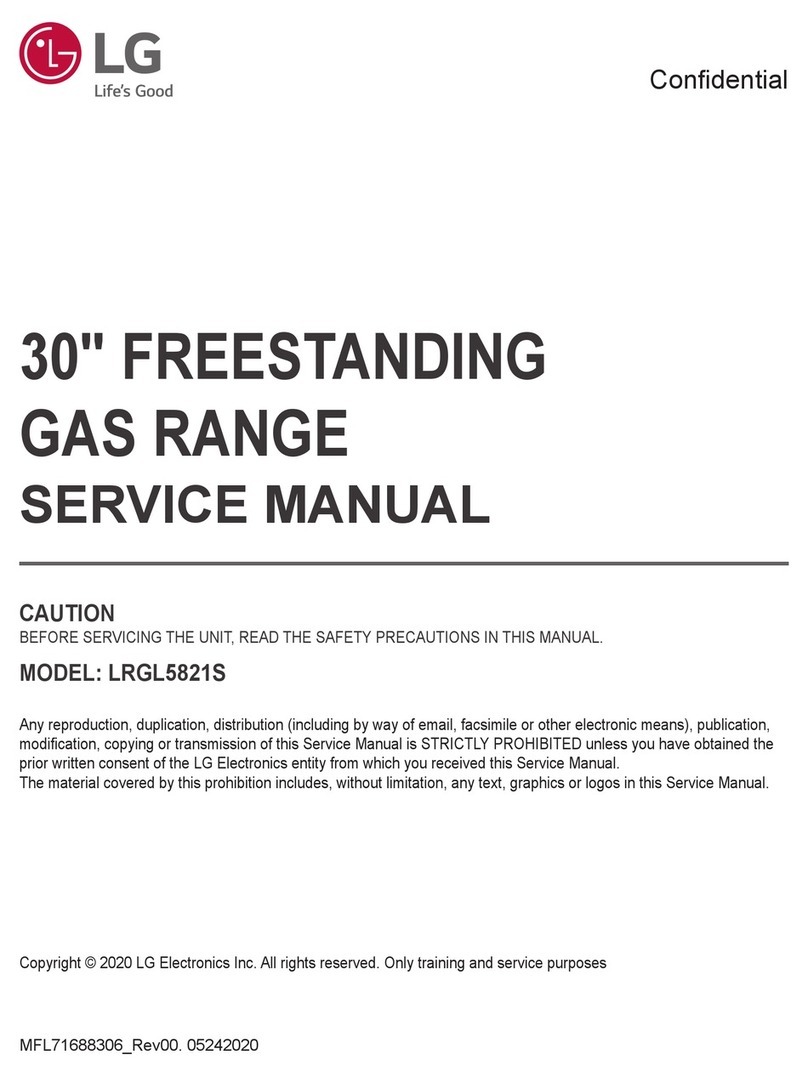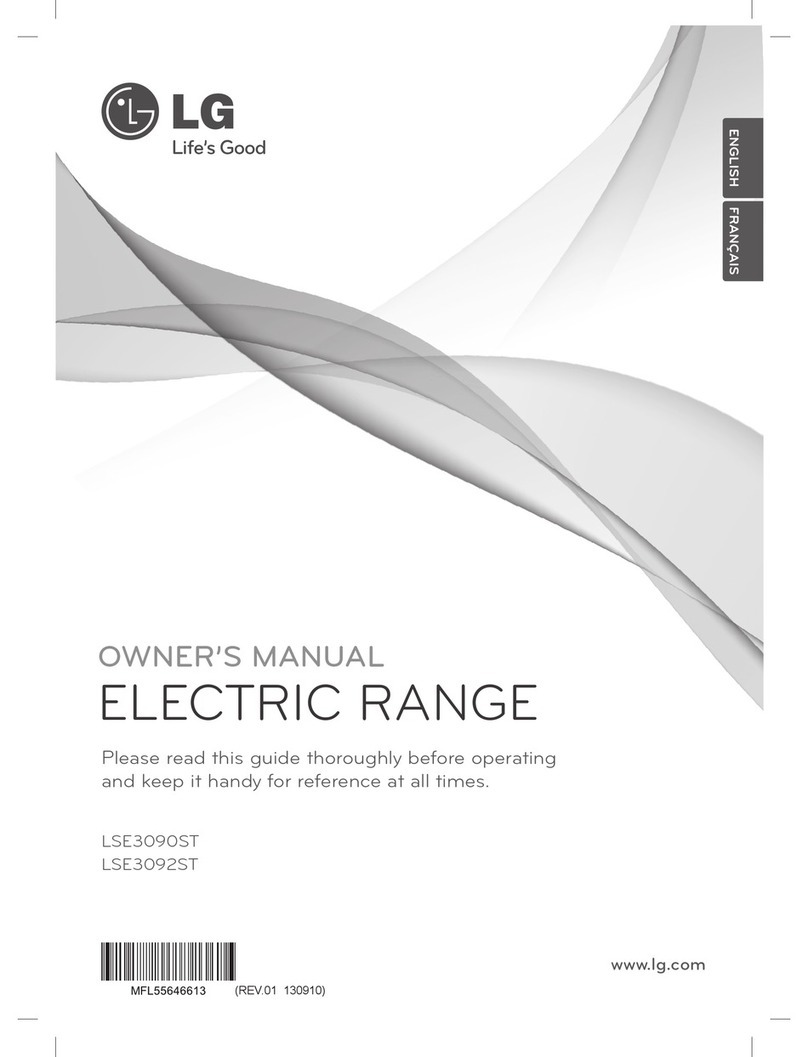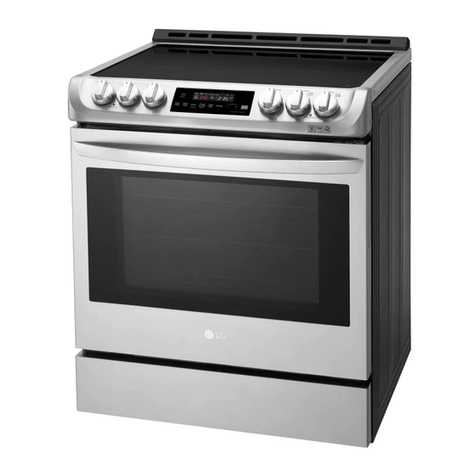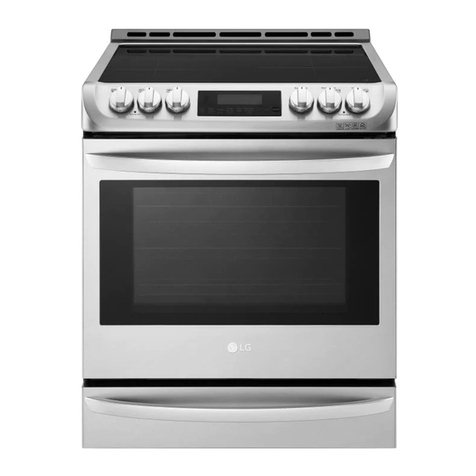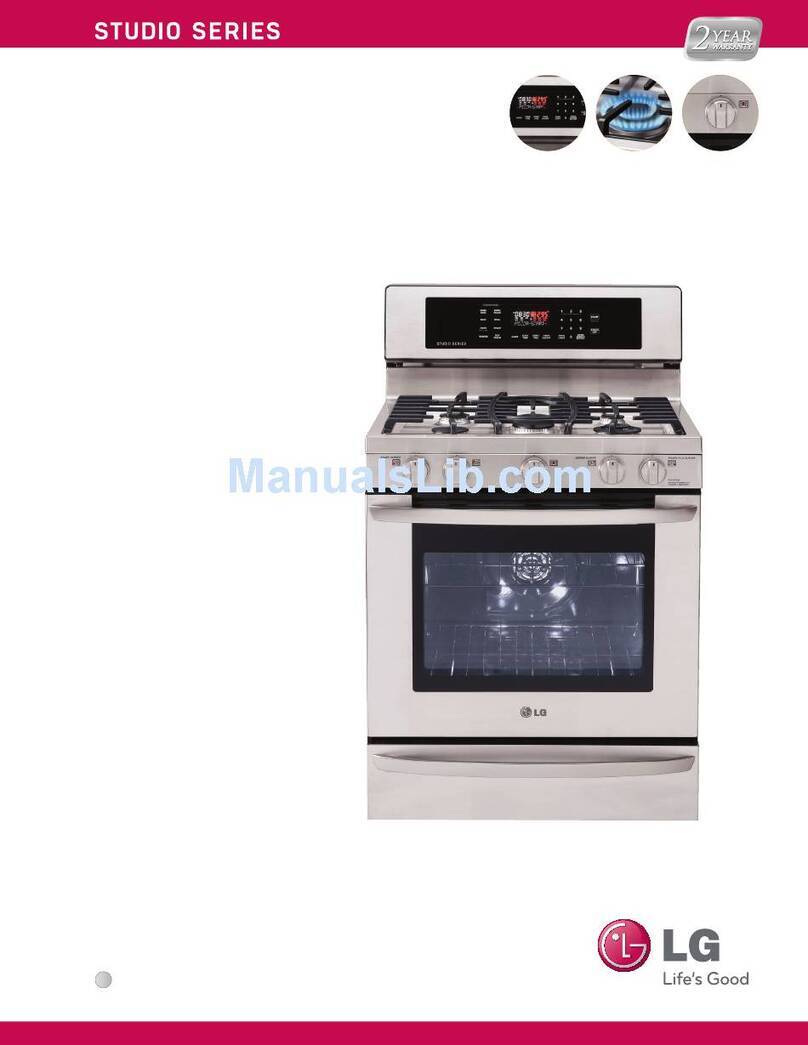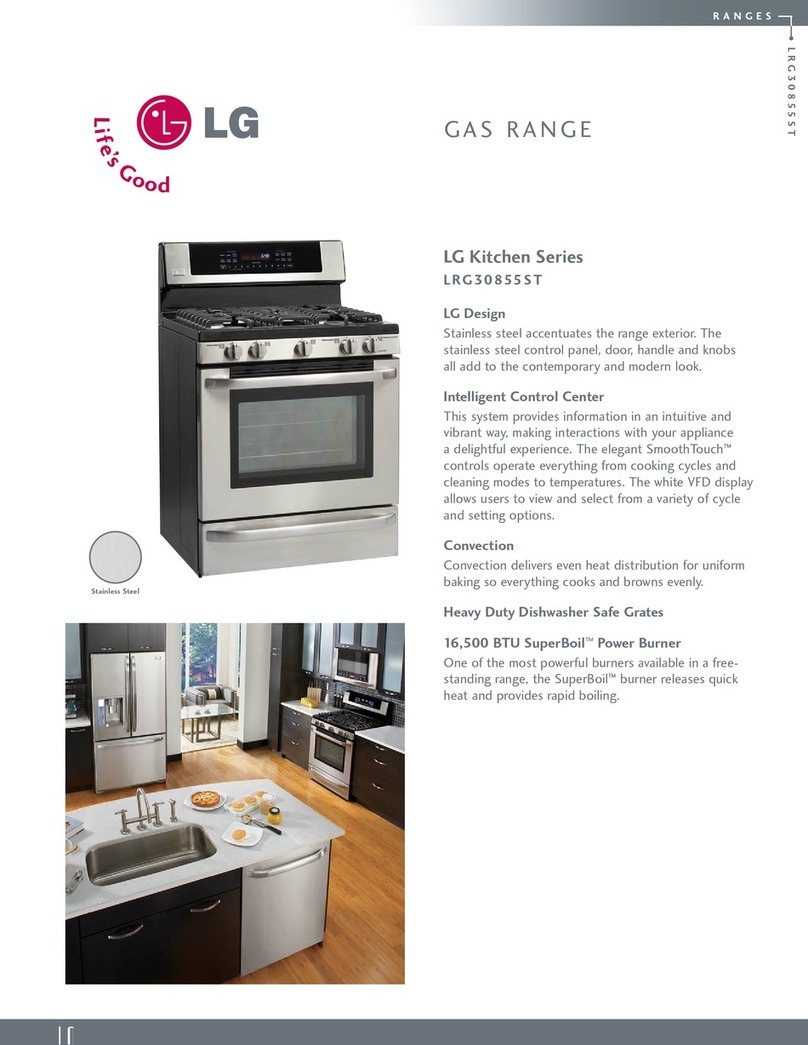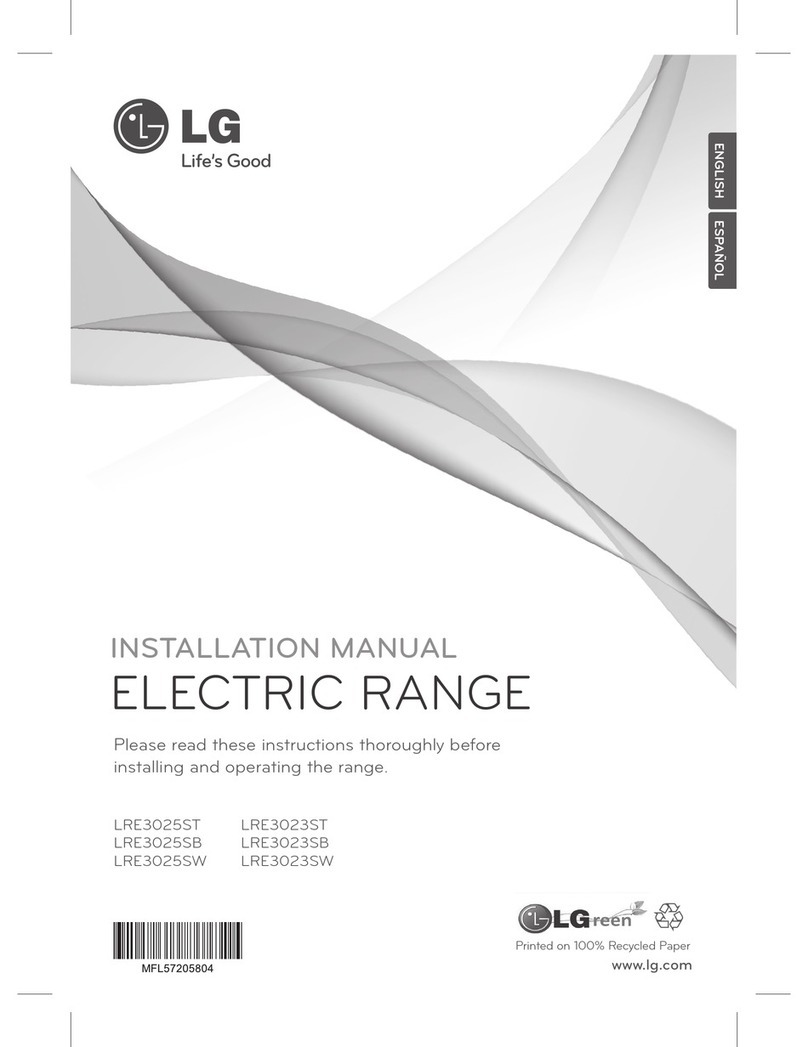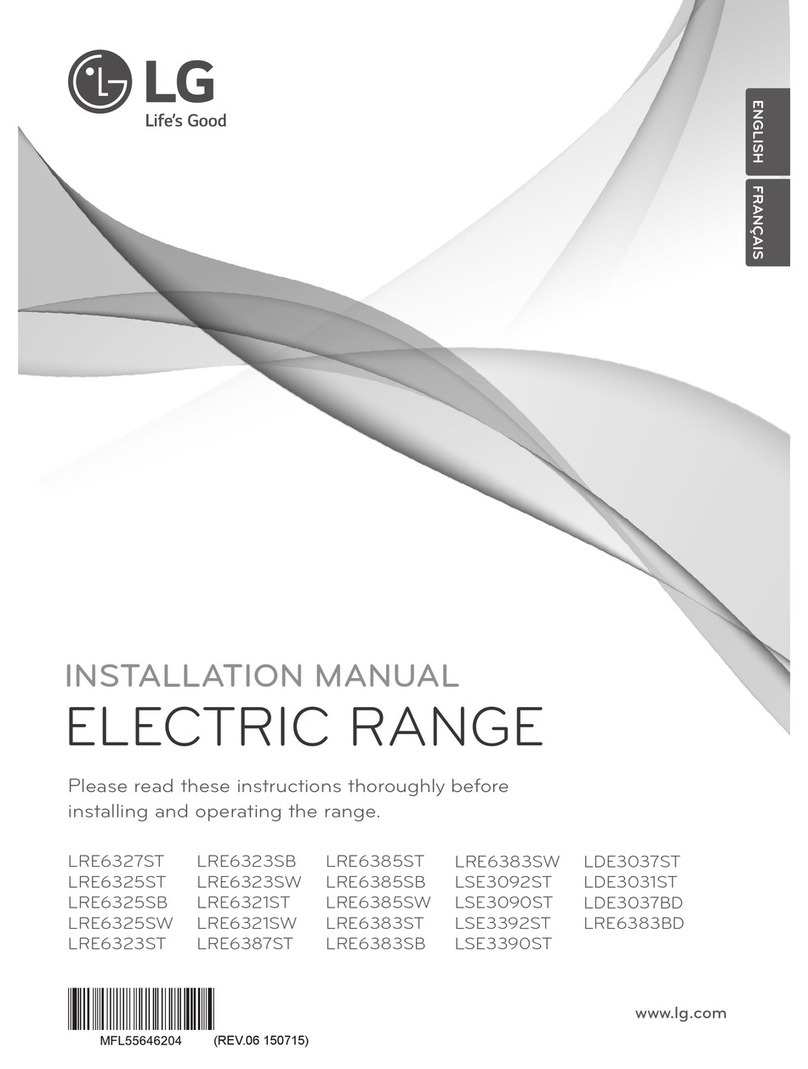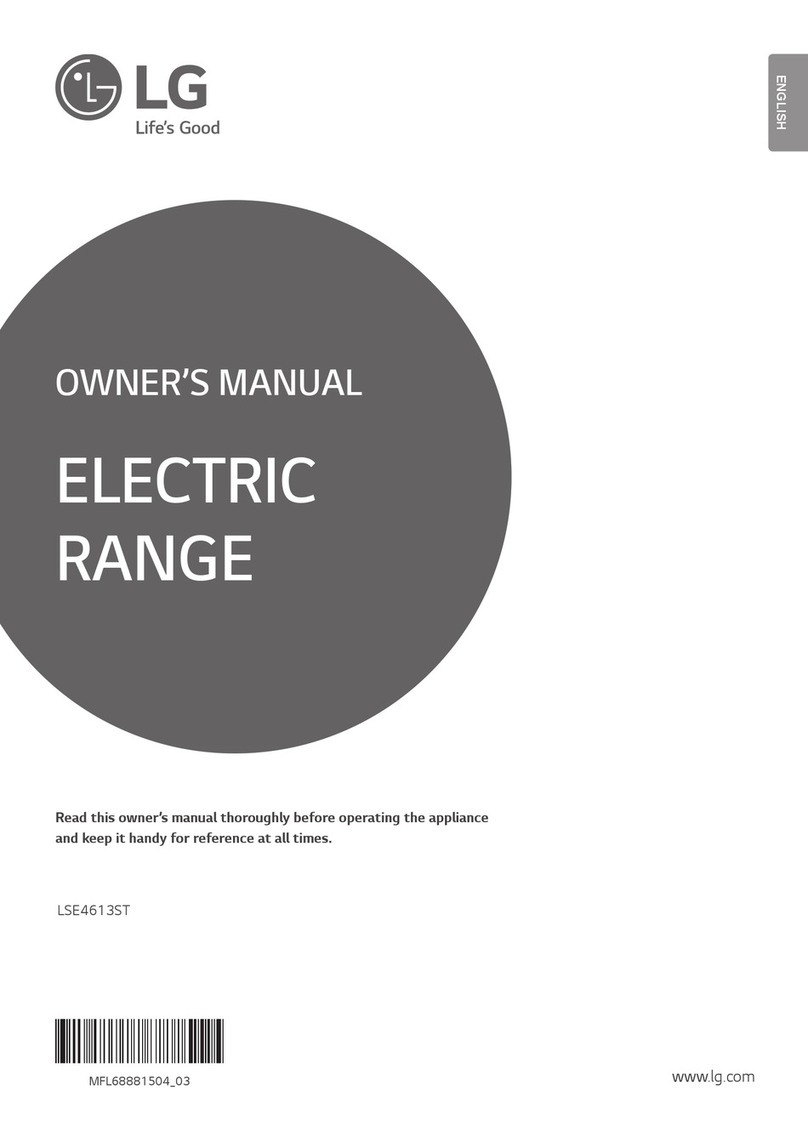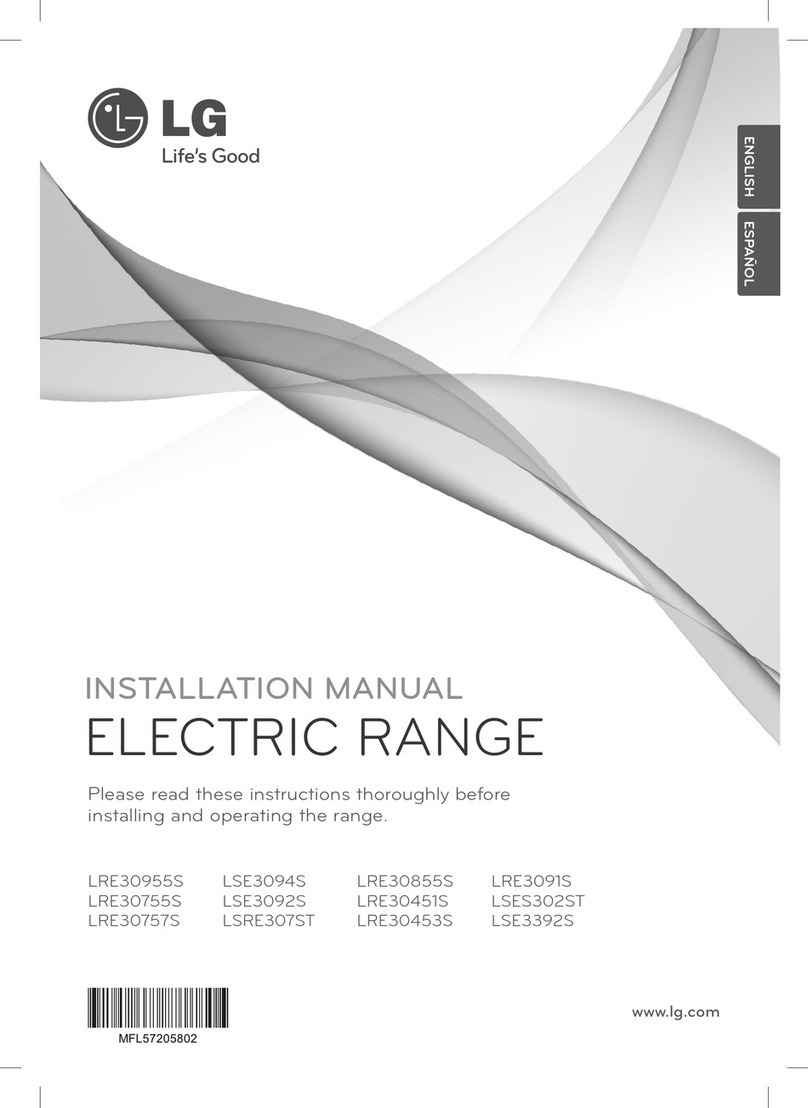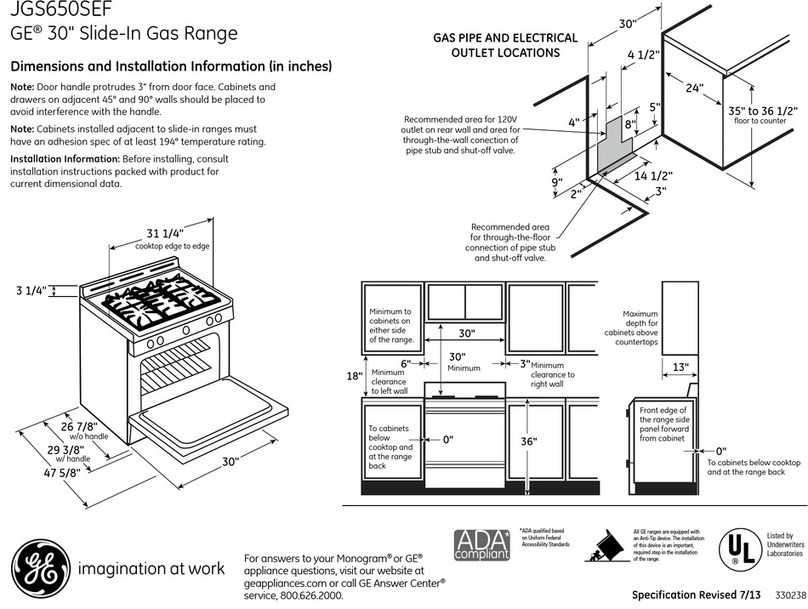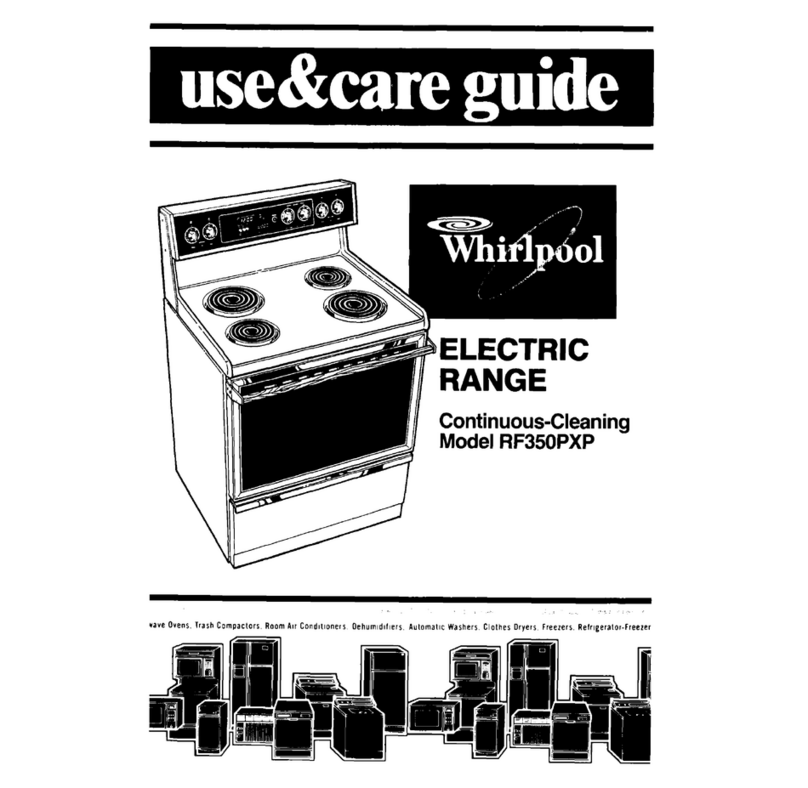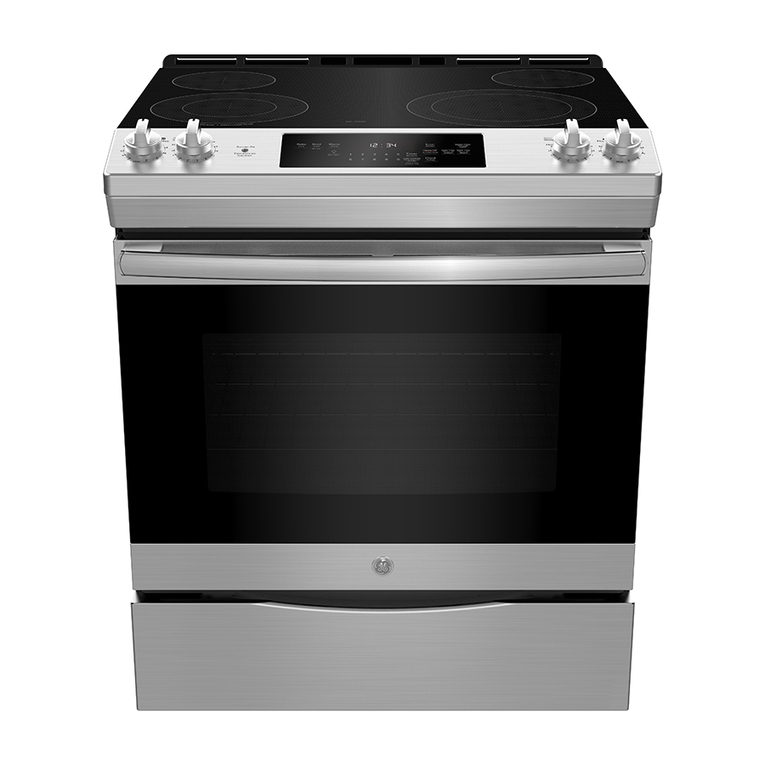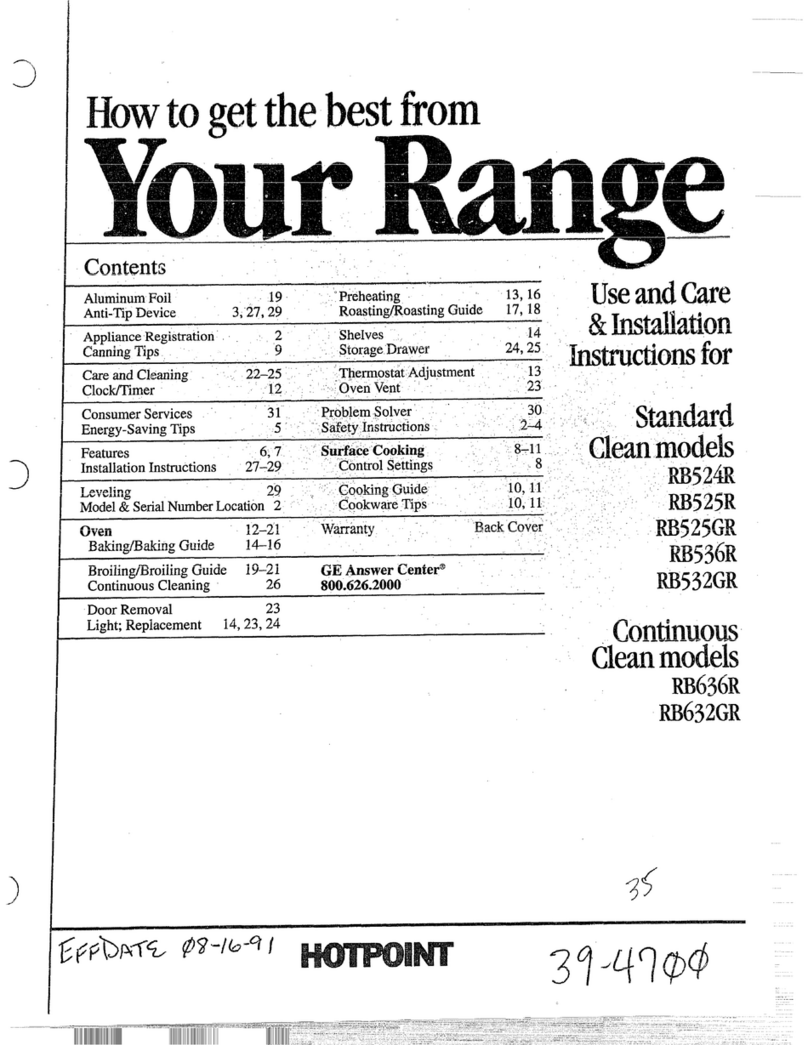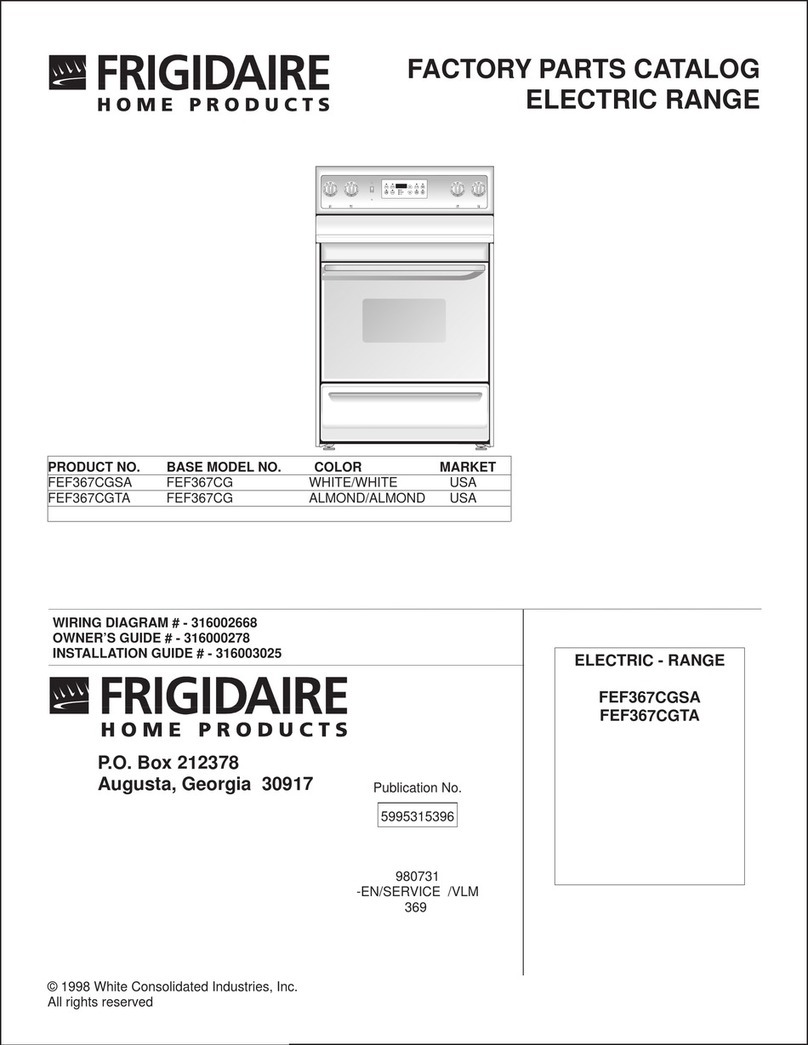INSTALLATION INSTRUCTIONS
INSTALLATION SAFETY INSTRUCTIONS (continued)
READ ALL INSTRUCTIONS BEFORE INSTALLATION
• NEVER reuse old flexible connectors. The use of
old flexible connectors can cause gas leaks and
personal injury. Always use NEW flexible connectors
when installing a gas appliance.
• Your range must be installed by a qualified installer.
• Your range should be electrically grounded in
accordance with local codes or, in the absence
of local codes, in accordance with the National
Electrical Code (ANSI/NFPA 70, latest edition). In
Canada, electrical grounding must comply with
the current CSA C22.1 Canadian Electrical Code
Part 1 and/or local codes. See “ELECTRICAL
CONNECTIONS” in this manual.
• Before installing your range on linoleum or any
other synthetic floor covering, make sure the floor
covering can resist 180°F(82°C) without shrinking,
warping or discoloring. Do not install the range over
carpeting unless a sheet of 1/4” thick plywood or
similar insulator is placed between the range and
carpeting.
• Make sure the wall coverings around the range can
resist heat generated by the range up to 200°F
(93°C).
• Leak testing of the appliance shall be conducted
according to the manufacturer’s instructions.
• Avoid placing cabinets above the range. To minimize
the hazard caused by reaching over the open flames
of operating burners, install a ventilation hood over
the range that projects forward at least 5” beyond
the front of the cabinets.
• The ventilation hood must be constructed of sheet
metal not less than 0.0122” thick. Install above
the cooktop with a clearance of not less than
1/4” between the hood and the underside of the
combustible material or metal cabinet.
The hood must be at least as wide as the appliance
and centered over the appliance.
Clearance between the cooking surface and the
ventilation hood surface MUST NEVER BE LESS
THAN 24 INCHES.
EXCEPTION: Installation of a listed microwave oven
or cooking appliance over the cooktop shall conform
to the installation instructions packed with that
appliance.
• If cabinets are placed above the range, allow a
minimum clearance of 30” between the cooking
surface and the bottom of unprotected cabinets.
desprotegidos.
WARNING!
• DO NOT step or sit on the door. Install the Anti-
Tip Bracket packed with range.
- The range could be tipped and injury might result
from spilled hot liquid, food, or the range itself.
- If the range is pulled away from the wall for
cleaning, service, or any other reason, ensure that
the Anti-Tip Device is properly reengaged when the
range is pushed back against the wall.
All ranges can tip and injury could result. To prevent
accidental tipping of the range, attach an approved
Anti-Tip device to the wall. (See “INSTALLING THE
ANTI-TIP DEVICE” in this manual.) To check if the
device is installed and engaged properly, carefully tip
the range forward. The Anti-Tip device should engage
and prevent the range from tipping over.
If you pull the range out from the wall for any reason,
make sure the Anti-Tip device is engaged when you
push the range back against the wall.
WARNING!
• ALL RANGES CAN TIP
• INJURY TO PERSONS COULD
RESULT
• INSTALL ANTI-TIP DEVICES
PACKED WITH RANGE
• SEE INSTALLATION
INSTRUCTIONS
